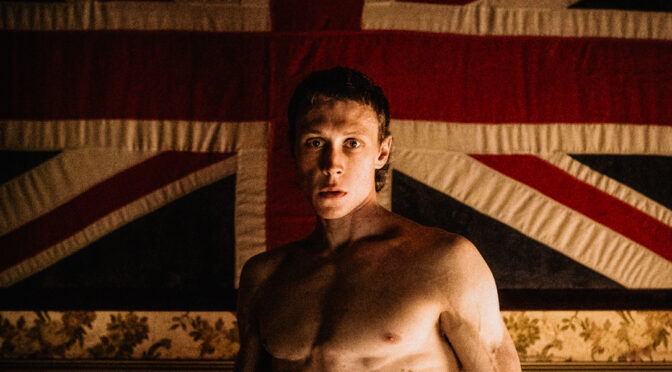 Charting the life of infamous Australian outlaw Ned Kelly, director Justin Kurzel’s new film (based on the book by Peter Carey) has some striking imagery and engaging performances but seems to lack the coherent storytelling required to drive home their impact. TRUE HISTORY OF THE KELLY GANG combines strengths and weaknesses of the director’s previous features to an inevitably mixed bag.
Charting the life of infamous Australian outlaw Ned Kelly, director Justin Kurzel’s new film (based on the book by Peter Carey) has some striking imagery and engaging performances but seems to lack the coherent storytelling required to drive home their impact. TRUE HISTORY OF THE KELLY GANG combines strengths and weaknesses of the director’s previous features to an inevitably mixed bag.
The film segments the story of Ned Kelly into three. Orlando Schwerdt plays the young Ned within ‘Boy’, and George MacKay portrays him within ‘Man’ and ‘Monitor’ depicting his rise to infamy. There are are many supporting roles, but the most prominent probably belongs to Essie Davis as Ellen, Ned’s mother. The film shows her sacrifices – some questioned – to keep her family afloat in the harsh colonial environment. Several figures pass through the Kelly family’s lives, with the clan antagonised by both local figures of infamy in Harry Power (Russell Crowe) and colonial authority figures Sergeant O’Neil (Charlie Hunnam) and, later, Constable Fitzpatrick (Nicholas Hoult).
As with MACBETH, Kurzel shoots the film with visual flourishes that lend numerous segments a dramatic and partially abstract look. One of that film’s best qualities – particularly in the unconventional interpretation of some of the descriptive prose – marked it out from a standard literary or stage adaptation. However, the opening segment of this film is the least visually adventurous and also the most effective. Orlando Schwerdt portrays the young Ned with a lovely blend of youthful fearlessness and naive vulnerability. It is also during this segment that the narrative seems most miscible with the film’s objectives. We see the effect of his relationship with Ellen, as well the corrupting influence of Russell Crowe’s Harry Power. The combination of these elements with the growing disdain for the complacent arrogance of Hunnam’s Sergeant O’Neil makes for a complete and clear set of arcs. The fact it takes place in a desolate and practically post-apocalyptic Australian landscape makes it feel all the more heightened.
After this, though, the film’s coherence feels decidedly ropier. Part of this is increasing chaos in Ned’s life and mind but is mostly a result of the decisions made by Kurzel and his team. The passage of time feels much more unclear (a crucial element in establishing the impact of the various influences on the younger Ned). While the more abstract aspects of the imagery are aesthetically intriguing – the symbolic horseback journey of Ned into dark and unknown frontiers chief among them – they don’t aid in the storytelling. There is a certain amount of assumed knowledge of Ned Kelly as a historical figure (and even, perhaps, previous screen portrayals) that may help to fill in some gaps in the film’s commentary. Still, it is to the detriment of the script that it seems required.
There are interesting aspects to these latter two chapters that are scarcely developed, primarily the homoerotic exchanges between Ned and gang member Joe largely unexplored beyond surface elements. Although it is refreshing to see a character study that neither glorifies nor downplays the outlaw violence and, in fact, portrays it in the ugly traumatic way it would have been experienced, the film fails to offer much in the way embellishment. Seemingly, it believes it has said all it needs to on that in the first chapter.
TRUE HISTORY OF THE KELLY GANG will stand as a bold and punky portrayal, with imagery – especially of Ned Kelly’s final stand – that is memorable. Much like the interpretation of the fulfilment of the Birnam Wood prophecy in MACBETH, it is a uniquely striking sequence. However, like Kurzel’s follow-up, ASSASSIN’S CREED, muddled storytelling robs these of the impact and holistic coherence so many elements richly deserve.

